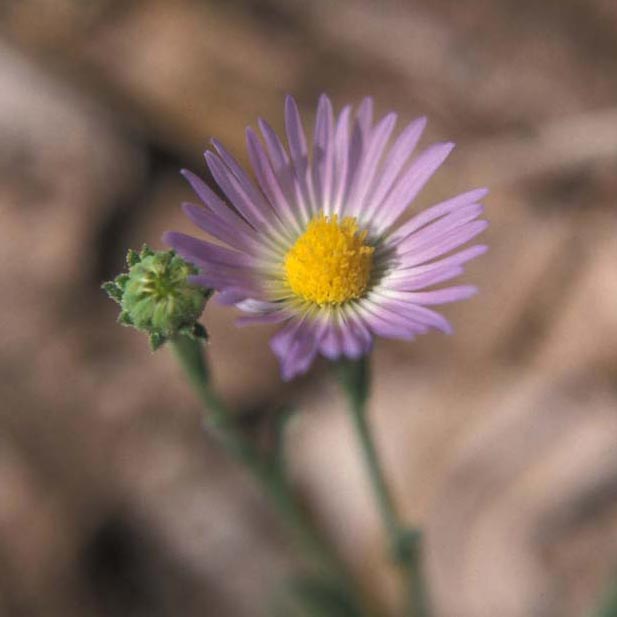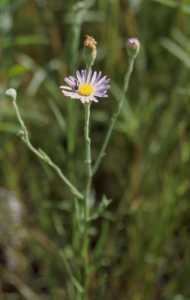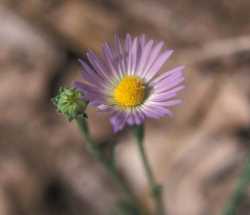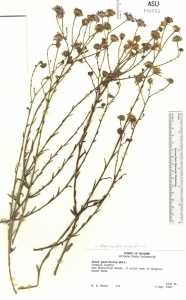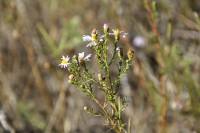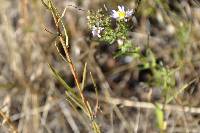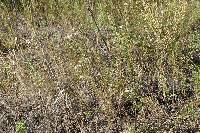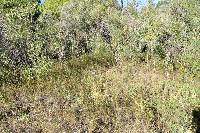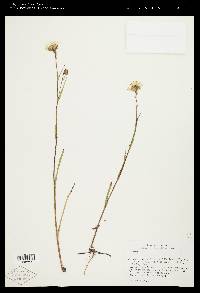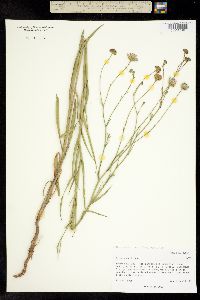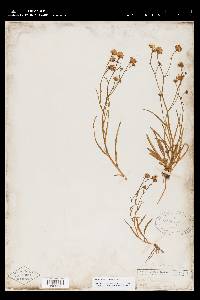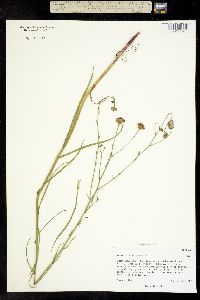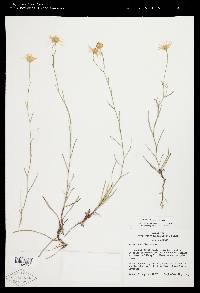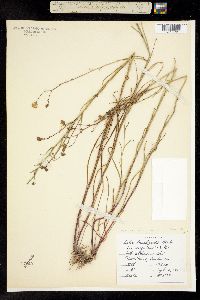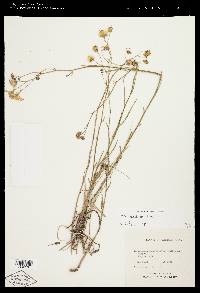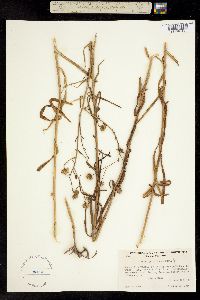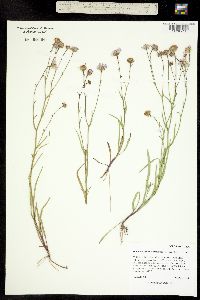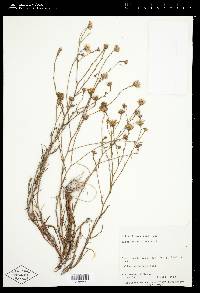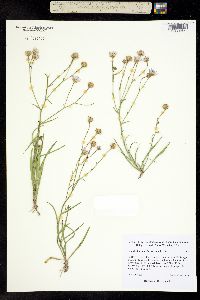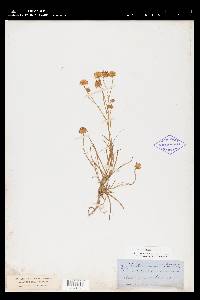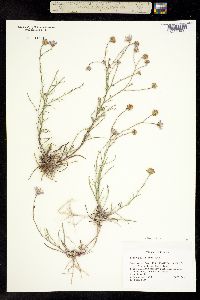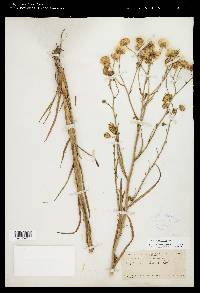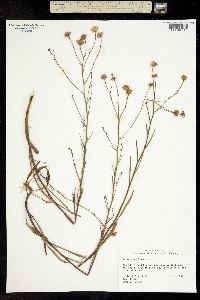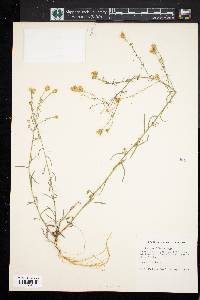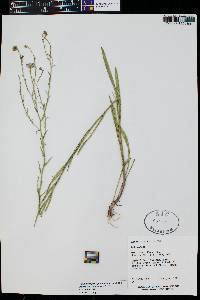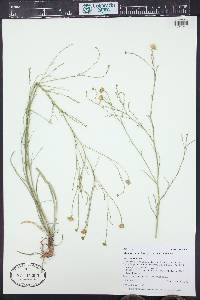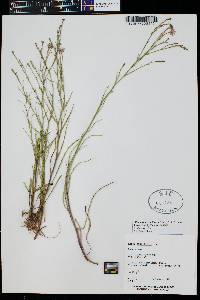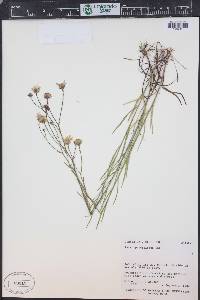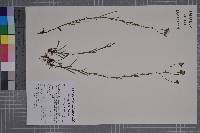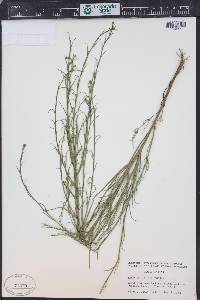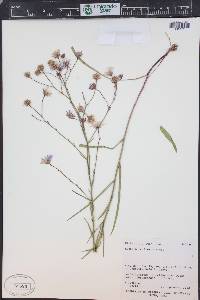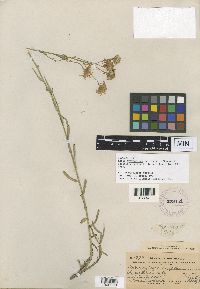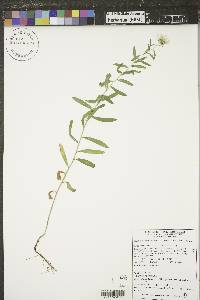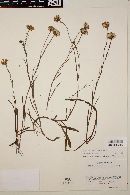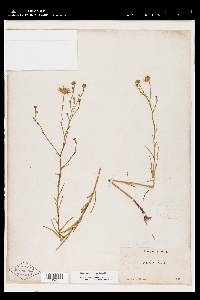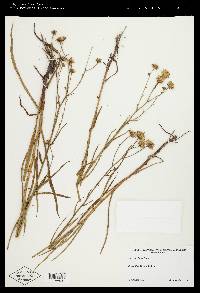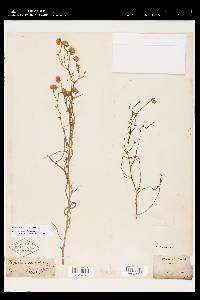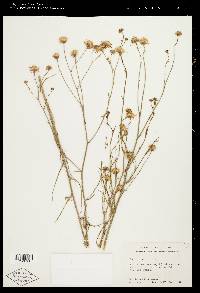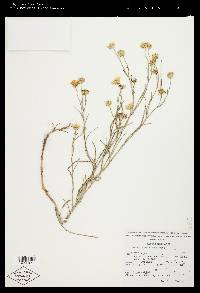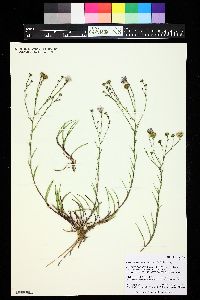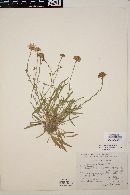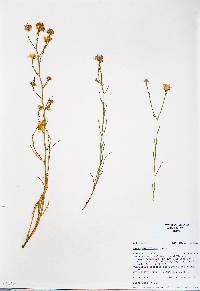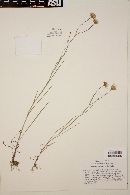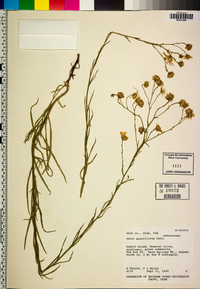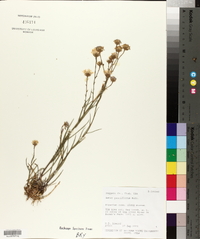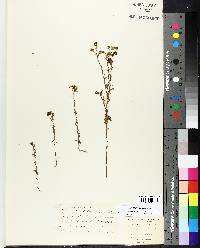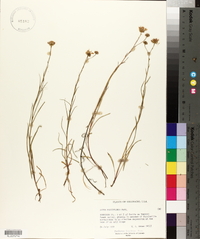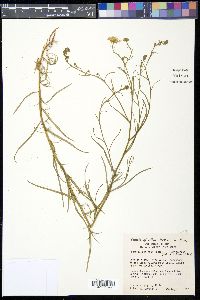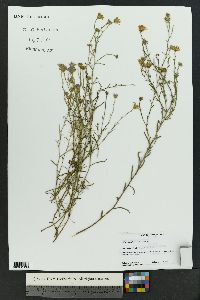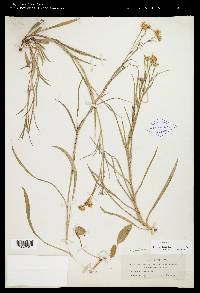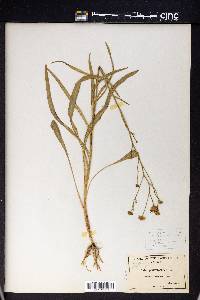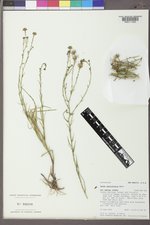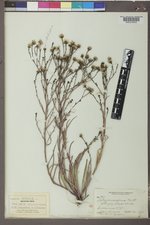Almutaster pauciflorus
|
|
|
|
Family: Asteraceae
alkali marsh aster, more...Marsh-Aster, alkalai marsh aster, alkali-marsh aster, alkalimarsh aster
[Aster caricifolius Kunth, moreAster hydrophilus Greene ex Woot. & Standl., Aster pauciflorus Nutt., Aster pauciflorus var. gracillimus A. Gray] |
Plants laxly colonial. Stems sometimes reddish at base. Leaves: blades 10-100 mm, margins sometimes ciliate or (distal) stipitate-glandular, apices mucronulate; basal sometimes marcescent, petiole bases widened, clasping, apices obtuse or acute; cauline reduced distally, subclasping, apices acute. Heads (1-)3-10(-30+), each terminating long, ascending branch. Peduncle bracts 2-9, glandular. Phyllaries ± green, margins erose-hyaline, inner more widely so, apices mucronulate. Ray floret laminae 5-8 mm. Cypselae golden brown, ribs stramineous. 2n = 18. Flowering spring-fall. Damp alkaline places, alluvial soils, with halophytic vegetation, inland salt marshes, along streams in ravines, ditches, in desert and dry prairie areas; 200-2400 m; Alta., Man., N.W.T., Sask.; Ariz., Calif., Colo., Nev., N.Mex., N.Dak., S.Dak., Tex., Utah, Wyo.; Mexico. FNA 2003, Jepson 2012, Quattrocchi 1999, Heil et al 2013 Duration: Perennial Nativity: Native Lifeform: Forb/Herb General: Perennial herbs, 15-120 cm tall, from long rhizomes, forming colonies; stems ascending to erect, glabrous below and stipitate-glandular above, sometimes reddish at base. Leaves: Basal leaves petiolate, early-withering; stem leaves alternate, with clasping, sessile bases, the bases of lower leaves forming sheaths around the stems; blades linear, 1-10 cm long, with 3-5 parallel veins; upper leaves reduced, bract-like, usually stipitate-glandular. Flowers: Flower heads radiate, white to lavender with yellow centers, arranged in open panicles on peduncles with stipitate-glandular bracts; involucres turbinate to hemispheric, 4-7 mm high, the bracts (phyllaries) in 3-4 series, all about the same length, more or less green and herbaceous throughout and covered with stipitate glands, the margins narrow, papery (hyaline) and irregularly toothed (erose); ray florets 15-45 per flower head, the laminae (ray petals) 5-8 mm long, white to pale purple; disk florets yellow. Fruits: Achenes spindle-shaped (fusiform), hairy, finely 7-10 ribbed; topped with a pappus of 25-45 bristles. Ecology: Found in damp alkaline places in alluvial soils with halophytic vegetation, such as inland salt marshes and along streams, ravines, and ditches, and in desert and dry prairie areas, below 8,000 ft ( 2438 m). Distribution: w CAN, south through MO, WY, CO, UT, AZ, NM and TX; west to CA, and south to MEX. Notes: This former member of the Aster genus is most similar the Symphyotrichum group, with its rhizomatous growth form, preference for wetland habitats, and small flower heads with white or light purple rays and yellow discs. Distinguish it based on its upper stems, upper leaves, and phyllaries which are covered with gland-tipped hairs (i.e. stipitate glands; use your hand lens); and the narrow grass-like leaves which have parallel veins. The lower stem leaves even form sheaths around the stems, similar to a grass. Note that this species has green herbaceous phyllaries with narrow, barely noticable hyaline margins, and all the phyllaries are about the same length; these traits set it apart from other members of the Aster/ Machaeranthera/ Symphyotrichum group, which commonly have graduated phyllaries with straw-colored bases and green tips. Ethnobotany: Unknown Etymology: The genus name Almutaster honors American Aster expert Almut G. Jones; pauciflorus means few-flowered. Synonyms: Aster pauciflorus, Aster hydrophilus, Tripolium pauciflorum Editor: FS Coburn, 2014, AHazelton 2017 |
|
|
|

